Gearing Properties
Negative Gearing & Rental Properties
Negative gearing is when an investor borrows money to invest in an asset that produces an income less than the associated borrowing costs. There are many forms of negative gearing, such as borrowing to invest in managed funds, shares or rental properties. One of the most common forms of negative gearing involves investing in rental properties.
Advantages of negative gearing into rental properties
- Ability to claim a tax deduction for interest and many other expenses relating to the income
- Maintaining cash flow whilst claiming a net loss
- Ability to use benefits of negative gearing to increase asset base
- Risks from property investment tend to be lower than other assets e.g. shares
- Paying CGT rather than the marginal rate of income tax
Disadvantages of negative gearing into rental properties
- Potential for increasing interest rates
- May be periods when property not earning an income
- Inflexible asset - e.g. not as transferable as shares, may need to sell at below market price
- Lack of diversification i.e. purchasing one property as opposed to a portfolio, "putting all your eggs in one basket".
All income relating to rental properties must be assessed. This includes gross rent received and rental-related income such as insurance recoveries and tenant contributions to expenses such as water rates.
Many expenses relating to rental property income are deductible for taxation purposes. These include:
- Interest & Bank Charges
- Advertising for Tenants
- Cleaning
- Council & Water Rates
- Electricity & Gas (paid by owner)
- Insurances (e.g. building & contents, landlord's protection)
- Agents Fees
- Repairs and Maintenance
- Travel for the purpose of rent collection, maintenance or inspection of the property
- Depreciation & borrowing expenses over $100 are claimed over a number of years
What is NOT claimable:
- Costs relating to the purchase of the property
- Stamp Duty
- Expenses of a personal nature e.g. that relates to the private use of a property rented out for part of a year
Tax effects of selling a negatively geared rental property
- Proceeds from properties purchased after 20th September 1985 will be assessed for Capital Gains Tax purposes
- Generally, this amount will be much lower than the marginal tax rate
- Recent amendments to legislation mean that the tax payable may be reduced or attract a 50% discount
- Some items not deductible as expenses can be included as part of the cost base
- A capital loss can be offset against any capital gains in the current year or may be carried forward to reduce tax payable on a future capital gain e.g. sale of shares
It is important when negatively gearing that the capital growth of the asset exceeds the additional costs incurred in running the negatively geared asset.


